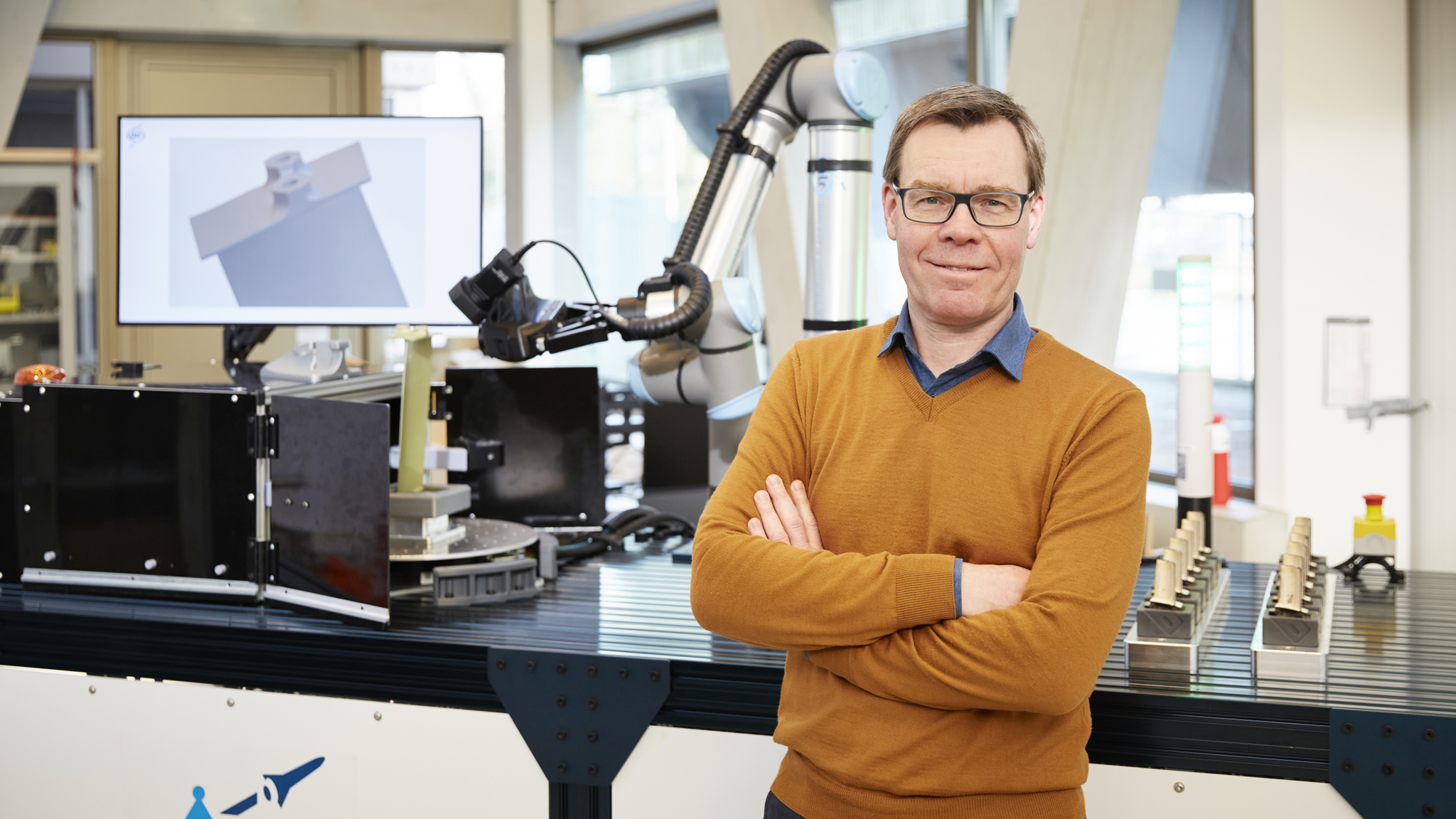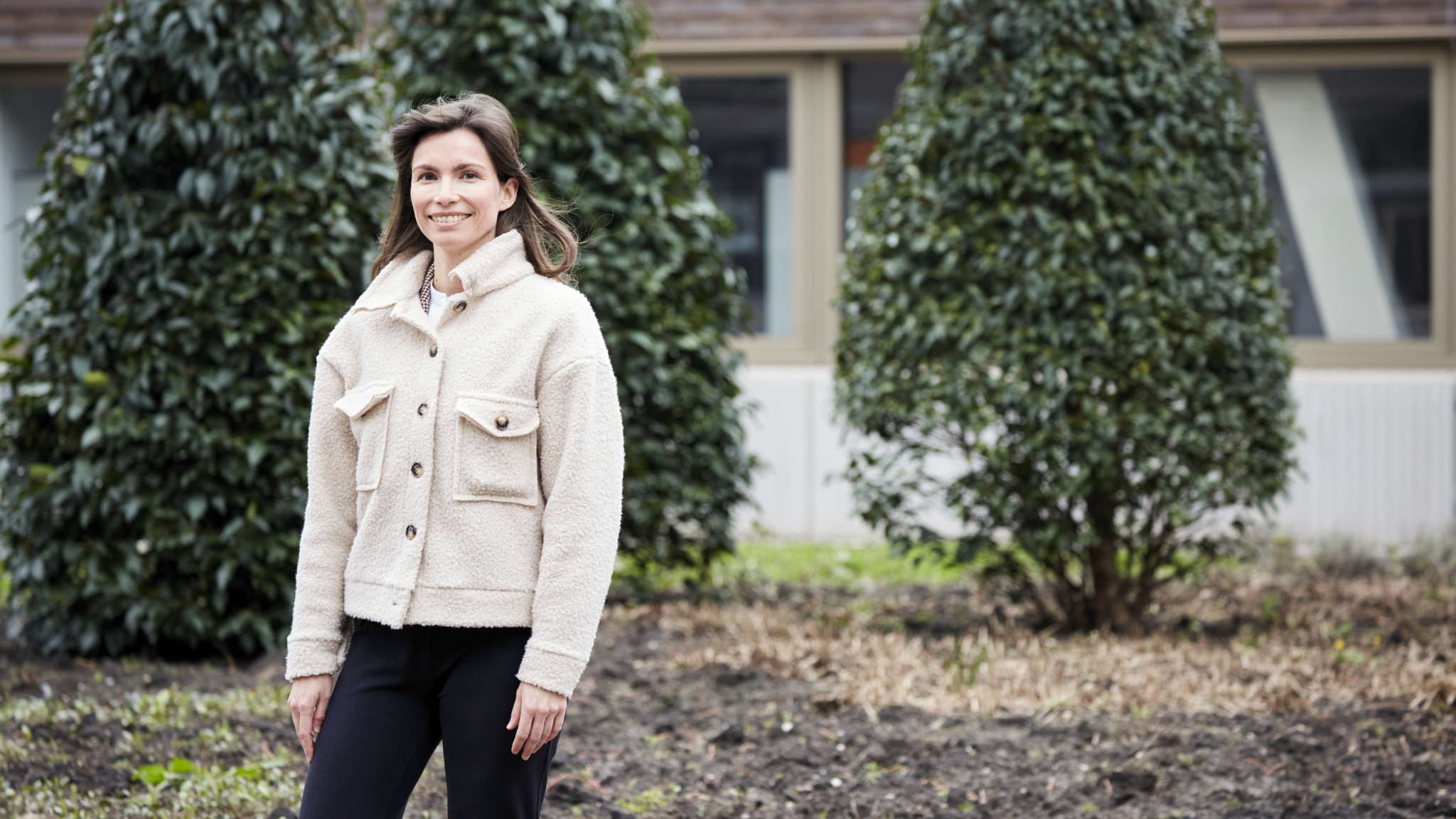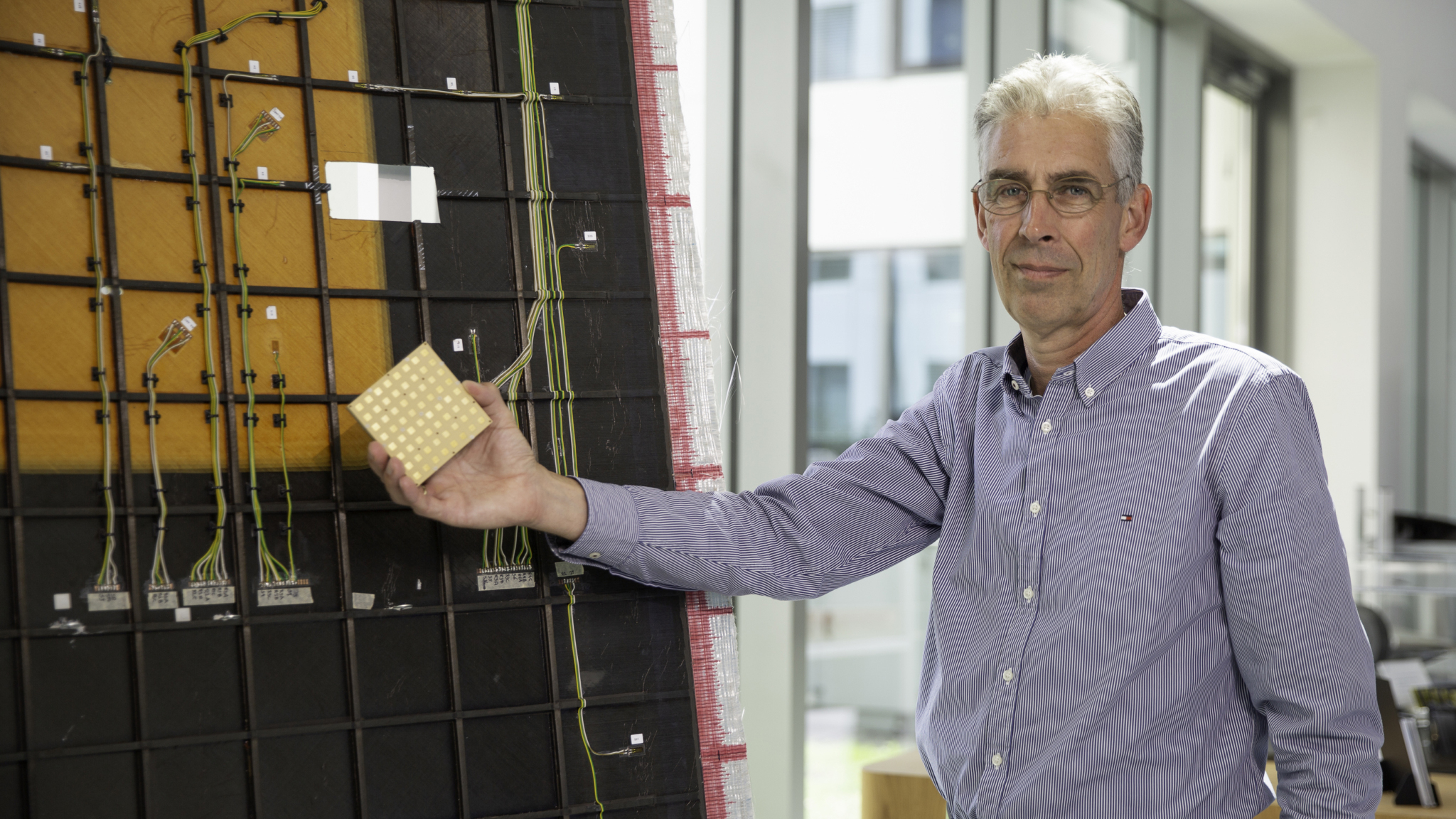Vliegtuigonderhoud innoveert snel. Dit is pas het begin
De piloot roept om dat hij over tien minuten de landing inzet. De stewardess controleert of alle riemen zijn vastgemaakt, tafeltjes zijn opgeklapt en stoelen in de juiste positie staan. Aan de voorkant houdt het cabinepersoneel de luchtvaartsector draaiende. Maar, aan de achterkant vormen onderhoudstechnici de onzichtbare backbone van de luchtvaart.
Om een beeld te geven: gemiddeld genomen staat een toestel – naast de relatief kleine onderhoudsbeurten – eens in de paar maanden meerdere dagen aan de grond voor een uitgebreidere controle. Eens in de twee jaar worden alle onderdelen grondiger nagelopen en geüpdatet en elke zes tot tien jaar wordt een toestel volledig binnenstebuiten gekeerd. Het moge duidelijk zijn: het onderhoud van vliegtuigen kost veel tijd en arbeidskracht. Steeds vaker moeten luchtvaartmaatschappijen vluchten schrappen omdat een deel van de vloot noodgedwongen aan de grond staat. Een van de belangrijkste redenen? Een tekort aan onderhoudstechnici.
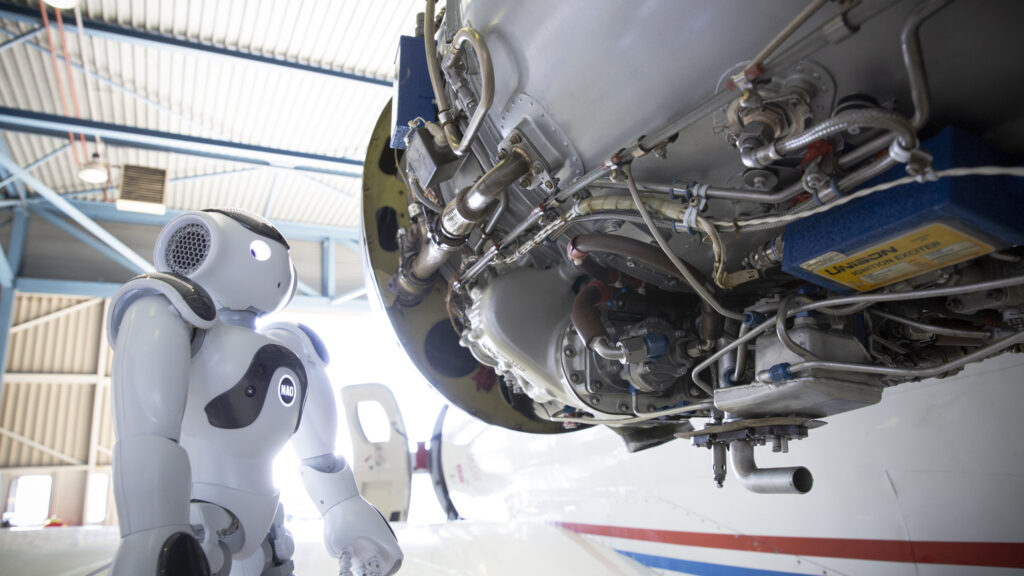
Onderhoudslast verlagen met technologie en planningen
Het operationeel houden van de luchtvaart is dus een complexe, cruciale, maar vooral “hele leuke” puzzel om te leggen, als je het Arjan de Jong de vraagt. Hij is R&D Engineer Principal op de afdeling Maintenance and Engineering Technology (MAE) Koninklijk Nederlands Lucht- en Ruimtevaartcentrum (NLR).
Op de afdeling MAE werken ze aan slimme oplossingen voor het optimaliseren van onderhoudsoperaties, onderhoudsplanningen en de toewijzing van middelen, reserveonderdelen en personeel. In andere woorden: hoe kunnen luchtvaartbedrijven en Defensie het meest uit hun vloot halen? Een voorbeeld van een tool die hierbij helpt, is het FlexPlan. Deze planningstool van NLR maakt automatisch slimme onderhoudsplanningen aan op basis van onderhoudsprogramma’s en vluchtschema’s. Het doel is om de planning van onderhoud te optimaliseren, zodat vliegtuigen zo kort mogelijk aan de grond hoeven te staan.
Ook een inspectierobot, die op basis van warmtebeelden – met behulp van thermografie – composietconstructies, schoepen of gasturbinemotoren analyseert, kan uitkomst bieden. Arjan: “Nu moet een monteur soms een hele dag met een hamertje op de bladen van een helikopter tikken om ze te controleren. Inspectierobots kunnen dit werk deels overnemen. Zo kunnen we voorkomen dat technici saai repeterend werk moeten uitvoeren, en kunnen we ze inzetten voor nuttiger en uitdagender werkzaamheden. Bovendien verbeteren we de werkomstandigheden door het dull, dirty and dangerous work te automatiseren.”
Dat het onderhoud van vliegtoestellen stopt bij het controleren van de motor of de rotorbladen, is een misvatting die Arjan graag de wereld uit helpt. “Als je een vliegtuig op een platform neerzet, zonder dat er mensen bij zijn, repareert het toestel zichzelf niet. Daarvoor heb je gekwalificeerde mensen nodig, maar ook reserveonderdelen. Je moet onderhoud plannen. We kijken niet alleen naar de machine, maar ook naar de mens. Hoe beheer je assets, hoe voer je je werkzaamheden uit?”
“Inmiddels heeft innovatie echt toegeslagen in het onderhoud. Ik vind dat geweldig om mee te maken”
Van de luchtscouts naar NLR
Het feit dat Arjan in de luchtvaartsector werkt, is geen toeval. Vanaf het moment dat hij op twaalfjarige leeftijd lid wordt van de luchtscoutingroep Van Weerden Poelmangroep is het duidelijk: later gaat hij iets met vliegtuigen doen. Hij dacht nog geen twee tellen na voor hij zich inschreef voor de opleiding vliegtuigbouwkunde op de HTS in Haarlem.
Het ‘iets met vliegtuigen doen’ is op z’n zachtst gezegd gelukt. Na de HTS in Haarlem komt Arjan terecht bij helikopteroperator Schreiner Airways (later CHC Helicopter Corporation). In diezelfde periode volgt hij een master Vliegtuigmanagement in Southampton. Voor CHC werkt hij vervolgens een aantal jaar in Canada, waar hij verantwoordelijk is voor de inrichting van alle niet-Europese onderhoudsorganisaties. Gelijktijdig rondt hij zijn promotieonderzoek naar contractrelaties in industrieel onderhoud af. In 2009 begint hij bij NLR.
De transitie naar een duurzame luchtvaart
Waar Arjan in 2017 samen met één collega aan innovatieve oplossingen voor onderhoud werkte, is er inmiddels een bewuste strategie uitgerold om het onderhoud van de toekomst op de kaart te zetten. Ondertussen werken er dertien mensen op zijn afdeling en zijn er regelmatig studenten van hogescholen en universiteiten te vinden die meewerken aan projecten.
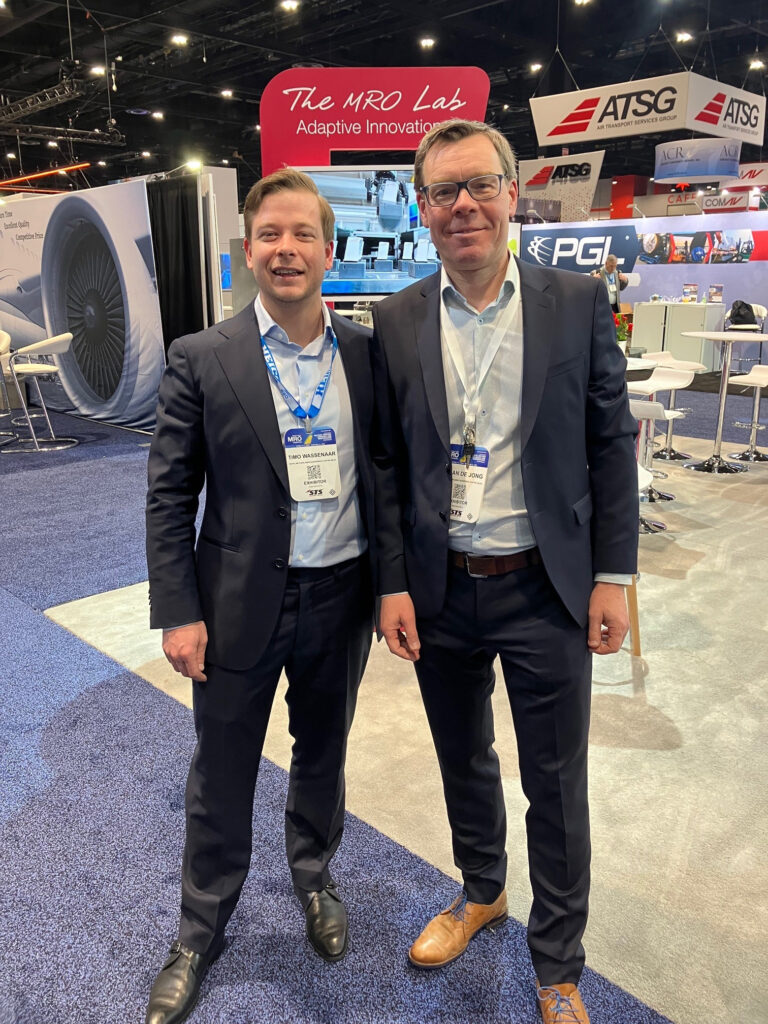
De transitie naar een groene luchtvaart is een belangrijk thema voor MRO; er passeren veel nieuwe technologieën en systemen de revue. Waterstof is daar een van de belangrijkste voorbeelden van. “Vliegtuigen met waterstof als aandrijflijn moeten ook onderhouden worden. Wij kijken naar een strategie hoe we onderhoudsactiviteiten in deze markt kunnen uitrollen.”
Dit is wat in de sector ‘design for maintenance’ wordt genoemd: een vliegtuig dat zo wordt ontworpen dat onderhoud zo gemakkelijk en efficiënt mogelijk plaats kan vinden. “Je kunt een onderdeel bijvoorbeeld zo ontwerpen dat het niet kapot kan”, verduidelijkt Arjan. “Maar, het kan ook een keuze zijn om een systeem te ontwerpen dat periodiek vervangen of geïnspecteerd moet worden, omdat dit goedkoper of lichter is. Er zijn dus verschillende onderhoudsconcepten met allemaal hun eigen economische afweging.”
Van breipennen en ponskaarten naar inspectierobots
De belangrijkste vraag vanuit de sector is een minder zware onderhoudslast, zodat vliegtuigen minder lang aan de grond hoeven te staan en dat onderhoudstechnici, die steeds moeilijker te vinden zijn, op een efficiënte manier ingezet kunnen worden. Arjan: “Dat kan betekenen dat we computertjes of sensoren integreren die aan de bel trekken als de conditie achteruitgaat. In de toekomst gaan we toe naar een geïntegreerd systeem dat zichzelf bewaakt, met ingebouwde apparatuur. Op die manier kun je ook onderdelen vervangen voor ze kapot gaan en onderhoud nog efficiënter plannen.”
Toen zijn carrière in de jaren negentig begon, was dit ondenkbaar. “Toen ik van school kwam, stonden ‘vernieuwing’ en ‘onderhoud’ lijnrecht tegenover elkaar. Vroeger stelden we het onderhoudsprogramma samen door twee breipennen in een stel ponskaarten te steken. Inmiddels heeft innovatie echt toegeslagen in het onderhoud. Ik vind dat geweldig om mee te maken, en ik ben ervan overtuigd dat dit pas het begin is.”
